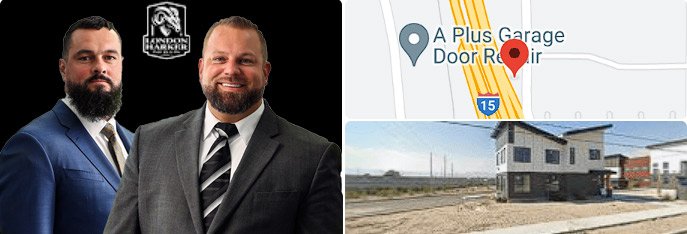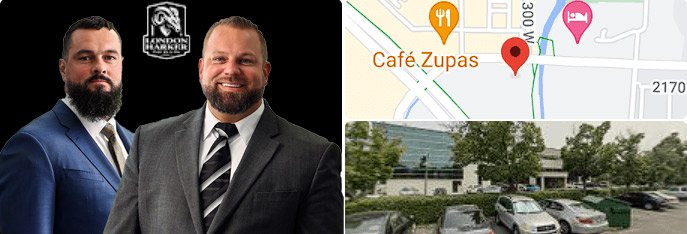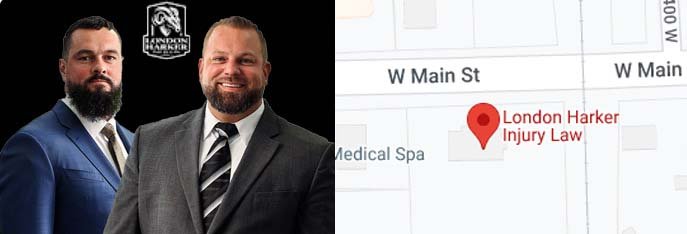Posted on Tuesday, July 22nd, 2025 at 10:00 am
Rear-end car accidents are among the most frequent types of crashes in Utah, often occurring at stoplights, intersections, or during heavy traffic on I-15 or I-80. While they may seem minor at first glance, these collisions can result in serious injuries and significant financial burdens.
Whether you’re dealing with whiplash, vehicle damage, or lost income, understanding your legal rights and the compensation available under Utah law is critical. In this article, we’ll break down your options for recovering damages after a rear-end crash in Utah, when fault matters, and how an attorney can help.
Common Injuries from Rear-End Crashes
- Whiplash and soft tissue damage
- Concussions and head injuries
- Back and spinal injuries
- Fractures or dislocations
- Emotional distress and anxiety
Even if you feel “okay” after an accident, symptoms may take days to surface. That’s why it’s essential to seek medical attention and legal advice as soon as possible.
Fault in Utah Rear-End Collisions: What You Need to Know
In many rear-end accidents, the trailing driver is presumed at fault—but this is not absolute. Utah follows a modified comparative negligence rule under Utah Code § 78B-5-818, which means:
- You can only recover damages if you are less than 50% at fault.
- Your compensation is reduced by your percentage of fault.
For example, if you stopped abruptly or had malfunctioning brake lights, you could be found partially liable. In that case, your damages would be reduced proportionally.
Recoverable Damages After a Rear-End Accident in Utah
Depending on the severity of your injuries and the circumstances of the accident, you may be entitled to several types of compensation:
Economic Damages (Tangible Losses)
- Medical Expenses: ER visits, MRIs, physical therapy, surgery, prescription medications.
- Lost Wages: Time off work due to injury recovery.
- Loss of Earning Capacity: Long-term impairment affecting your ability to work.
- Property Damage: Vehicle repair or replacement and other personal items damaged in the crash.
- Rental Car & Transportation Costs: Covered if the at-fault insurer accepts liability. They must pay reasonable rental costs from the date of the accident through a fair settlement period.
Under Utah Code § 31A-22-307, the first $3,000 of medical expenses must be paid by your own insurance policy via Personal Injury Protection (PIP), due to Utah’s no-fault law.
Non-Economic Damages (Intangible Losses)
- Pain and suffering
- Emotional distress
- Loss of enjoyment of life
- Disfigurement or permanent disability
- Loss of consortium (for a spouse)
These are often harder to quantify, but can be substantial—especially in more serious rear-end accidents involving lasting impairment.
Punitive Damages (Rare but Possible)
If the rear-end accident involved extreme negligence—such as drunk driving or road rage—you may be able to pursue punitive damages under Utah law to punish the wrongdoer and deter similar conduct.
Deadlines for Filing a Rear-End Accident Claim in Utah
Strict statutes of limitations apply to Utah auto accident claims. Missing a deadline can permanently bar your right to recover compensation:
- Injury Claims: 4 years from the date of the accident.
- Property Damage Claims: 4 years (or 3 years if combined with injury).
- Wrongful Death Claims: 2 years from the date of death.
- Claims Against Government Entities (City, County, State):
- A Notice of Claim must be filed within 1 year of the accident under the Utah Governmental Immunity Act.
- You then have 2 years from the date of the accident to file a lawsuit.
Important: Failing to submit the Notice of Claim within the one-year window will prevent you from filing a lawsuit—even if you’re still within the two-year limit. This applies to all levels of government in Utah.
Steps to Take After a Rear-End Collision in Utah
- Call the Police: Get an official crash report.
- Document the Scene: Photos, witness contact info, vehicle positions.
- Get Medical Attention: Even if symptoms seem minor.
- Exchange Insurance Info: But avoid admitting fault.
- Understand Your Repair Rights: You can choose your repair shop; insurers must disclose non-OEM parts in writing.
- Avoid Quick Settlements: Don’t accept money or sign a release until you’ve completed treatment and understand the full value of your claim.
Why You Should Consult a Utah Car Accident Attorney
Rear-end accident claims may seem straightforward, but insurers often minimize payouts or deny claims based on “pre-existing injuries” or partial fault.
At London Harker Injury Law, our experienced team helps accident victims across Utah:
- Gather critical evidence like dash cam footage, repair estimates, and medical records.
- Handle communication with insurance adjusters.
- Fight for the maximum compensation you’re entitled to.
- Guide you through legal deadlines and court filings, if necessary.
Get a free case review today—no fee unless we win. Protect your rights and focus on healing while we handle the legal battle.
FAQs About Utah Rear-End Accidents
What if I was partially at fault?
You can still recover damages if you were less than 50% responsible, but your award will be reduced accordingly.
Can I sue the driver who hit me?
Yes, if you meet Utah’s no-fault threshold (over $3,000 in medical bills or serious injuries), you can step outside the PIP system and file a third-party claim.
What if the at-fault driver doesn’t have insurance?
You may be able to use uninsured motorist (UM) coverage through your own policy to recover damages.
Need Help After a Rear-End Collision in Utah?
If you’ve been hit from behind, don’t try to navigate insurance companies and legal deadlines on your own. Let the team at London Harker Injury Law guide you through your recovery and help secure the justice you deserve.



